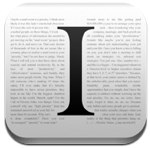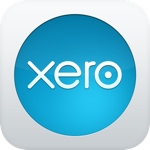 This time last year I listed my favorite Web products of 2010. I enjoyed that process so much that I’m doing it again this year. These are products that I liked and used the most during 2011, but I hope my list is useful to others too.
This time last year I listed my favorite Web products of 2010. I enjoyed that process so much that I’m doing it again this year. These are products that I liked and used the most during 2011, but I hope my list is useful to others too.
I wondered whether my top 10 products for 2011 would look similar to 12 months ago, but it turns out that only 3 of the same products made the cut again. Most of my favorite Web products this year are new, or at least newly popular with me. I’ve attempted to put this list in order, from my top product of 2011 to my 10th favorite. I’m curious to know how my personal top 10 matches up with yours. Let me know in the comments!
Over 2011, Evernote became my go-to product for organizing my life. It’s now my main note-taking app, largely usurping paper notebooks. I still make some notes the old fashioned way, by writing freehand in my Moleskine journals. But less than I used to, because of Evernote. I also use Evernote to store and categorize important emails, photos and other online bits and bobs. I have a variety of notebooks within Evernote, organized by stacks (Personal, Business, Travel, Writing, and more). In short, Evernote is an indispensable tool for me nowadays. I pay for the premium product and will continue to do so. I will say that Evernote sometimes has technical glitches and its user interface isn’t as intuitive as Dropbox, another favorite of mine (see below). Even with those quirks, I love Evernote.
2. Facebook (social networking) 
Last year I included Facebook among my favorite products because all of my family and many non-geek friends had connected to me on it. I continued to enjoy Facebook this year for those reasons. I also thoroughly enjoyed Facebook’s innovations this year; especially Timeline. I also liked the smart lists and upgrades to private messaging (merging chat and mail; the Messenger iPhone app). Even the controversial frictionless sharing – where things you listen to, read or watch are automatically shared to your news feed – captured my imagination. Facebook is my most used social network, it’s as simple as that.
Dropbox wasn’t among my top 10 last year, but this year my usage of it increased a lot. I began to use Dropbox to store and sync all my important files, so that I could access them across devices. I found this particularly convenient while traveling, as I now had access on my laptop to all of the business documents that I’d created or edited on my home office desktop. I also really like the simplicity and UI ingeniousness of Dropbox – for example, seeing that little green tick on a file tells you that it’s synced.
This year I made the switch to Tumblr, despite being a fan of my previous light blogging service Soup.io. I wasn’t disappointed. Tumblr has a beautiful user interface and with a click of a browser button I could easily blog videos, photos and text that I came across on the Web. I also liked how simple Tumblr’s iPad and iPhone apps are to use. Although I felt guilty leaving the smaller, scrappier startup Soup.io, it was also nice to connect with my friends on the Tumblr network. I know the Soup.io folks are busy working on their next innovation, so they will wow a wider audience one day I’m sure.
I must admit that online music services were a constant frustration for me this year, as I live in a country that doesn’t have access to them. Despite that, I tested them all and I found MOG to be the best for my purposes. It often seemed to have more of my favorite new music than Spotify (perhaps because it caters to alternative music fans? I’m not sure why). I also liked the minimalist mobile-inspired re-design that MOG deployed this year. I should note that I admired Spotify’s connection to Facebook and the frictionless sharing feature worked perfectly for me on Spotify – but not at all with MOG. Regardless, by year’s end MOG is still my main online music service. That may change once I can access Spotify in my country without having to use a VPN. So I hope that MOG, Rdio and others continue to innovate and keep Spotify honest.
6. Google+ (social networking) 
OK, I was skeptical about Google+ at first. What, another social network?! Why do I need that, I moaned (along with many other people when Google+ launched in late-June). But I slowly warmed to Google+ and by year’s end, it’s my second favorite social media service. I still don’t post to it as much as I do Facebook, but in many ways Google+ has usurped Twitter as my interest network of choice. If I want to poll my Google+ followers about a certain web app, I’ll likely get a better response on Google+ these days than on Twitter. I also enjoyed discovering fascinating networks of artists, photographers and other non-tech people on Google+.
Instapaper was on my top 10 last year too. It continues to be a well-used service for me. Every weekday morning, I load up Instapaper with articles that I want to read – found through my favorite blogs, aggregators like Techmeme, Flipboard, Google Reader and more. I read those articles on Instapaper while on my iPhone or iPad, often while having coffee in my local cafe after lunch or in my lounge stretched out on my sofa at the end of a long day.
Xero may not be known to many of you, as it’s only just begun to target big markets like the U.S. and Britain. It’s an online accounting product, developed in New Zealand, that allows you to manage your finances and sync your bank accounts. Your accountant can access it too, if you connect them. We have used Xero at ReadWriteWeb for a while now and it’s an indispensable business tool for us. Xero also recently released a personal version, which I’m trailing currently. Many of you probably use Mint or a similar product to manage your finances online, so Xero Personal is my local version of that. Its the business version of Xero though which you should keep an eye out for. The kiwi company is busy expanding overseas and I haven’t seen an accounting product like it in the U.S. market.
If the future of long-form non-fiction is a multimedia enhanced iPad app, then The Atavist is it. Who says people won’t pay for content? I shelled out clams a number of times over 2011, in this app. For example I paid a few dollars to read the story of how Brian Wilson and The Beach Boys made their fabled album, Pet Sounds. Each story is a download within the app and is accompanied by images, video, audio and other multimedia parts.
While I didn’t use SoundCloud that much to upload my own audio snippets, I certainly did use it to consume music and to occasionally check out other peoples audio. SoundCloud wants to be a YouTube for audio, a big ambition. I for one still use YouTube a heck of a lot more than SoundCloud, but even so the latter is one of my favorite products of the year. YouTube is almost a commodity on the Web now. It pours out video like the taps that provide me with water in my home. But SoundCloud is still shiny and new; so I enjoyed playing with it and in particular listening to new music on it.
Honorable Mentions
There were many other products that I used a lot this year. Ones from last year’s list that I still love are Flipboard, Chrome and Woopra. New apps that impressed me included Pixelmator (an excellent Photoshop replacement for Mac), News360 and Drync. Other apps that kept me busy included Kindle for iPad, Zinio, TweetDeck and Meetup.
This post was originally published on ReadWriteWeb on December 19th, 2011.






